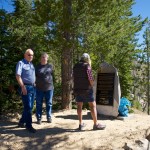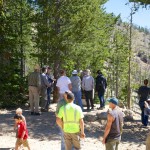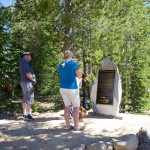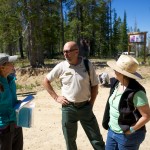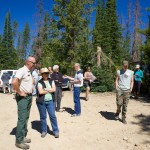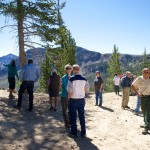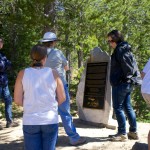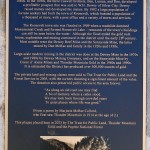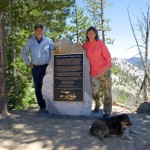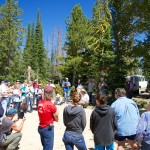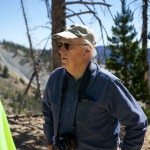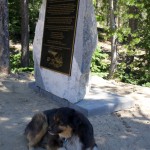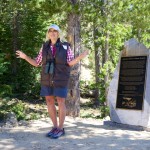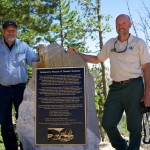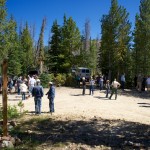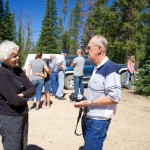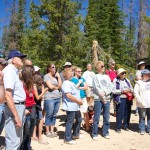Published on July 31, 2014
On Saturday, July 26 a plaque was dedicated at Monumental Summit by the Trust for Public Land, Thunder Mountain Gold and the Payette National Forest. The plaque honors the pioneers who lived and worked in the Thunder Mountain District.
Prospectors first passed through the Stibnite Mining District on their way to the Thunder Mountain gold rush, east of the Midas Gold project. In 1896, Ben Caswell, while searching for a lost mule, discovered a rich gold deposit near Monumental Creek. He, his brothers, Lou and Dan, and a partner, Wesley Ritchie, started working claims in the area.
In 1901, the journal Mines and Minerals published an article extolling the opportunities for finding gold at Thunder Mountain. Prominent Idahoan William H. Dewey investigated the Caswell claims, formed the Thunder Mountain Gold and Silver Mining and Milling Company with investors, and purchased the Caswell claims for $100,000. This and other business deals attracted national attention and set off a gold rush to Thunder Mountain in the spring of 1902.
Hundreds of men traveled to the site in 1902 to file their claims. The Thunder Mountain district did not live up to the expectations, and operations began to slow after 1905. In 1909, a landslide into Monumental Creek caused a flood that destroyed the gold rush town of Roosevelt (now Roosevelt Lake) and just a year later, most operations had ceased or were closing.
Large scale mining returned to Thunder Mountain in the 1970’s at the Dewey and Sunnyside Mines. In 2005 private claims were sold to the Forest Service and the Trust for Public Lands in a deal that preserves public access.
At the dedication on Saturday, more than 60 members of the Caswell family and other guests were in attendance.

